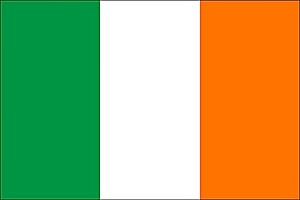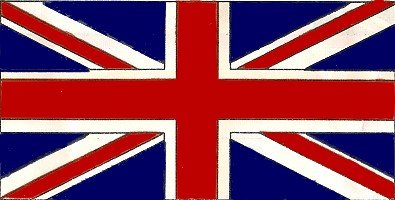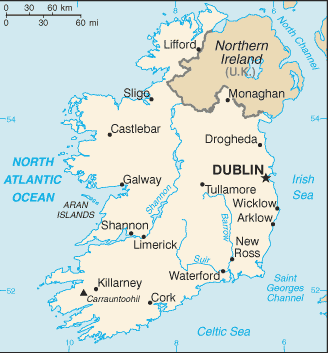Special Days Every Month
Celebrate and learn about special days
every day of the year!
|
Irish Home Rule
|
|||
|
The Act was the first law ever passed by the Parliament of the United Kingdom that sought to establish devolved government in a part of the United Kingdom. Historical Background During the medieval period (Normans to Tudors), English kings mounted a number of campaigns to pacify the Irish Celtic chieftains. The first serious English attempts to settle Ireland began in the 1500s
During the early 1600s, Scottish and English Protestants who were loyal to the British monarch were ‘planted’ in Ulster (roughly the area occupied by Northern Ireland today). The settlements were called Plantations and the land they were given was taken away from long-standing Catholic landowners. The Reformation did not succeed in making Ireland a Protestant nation. Protestants were mainly the new English and Scottish settlers and therefore were seen as ‘foreigners’. The rest of Ireland remained Catholic and generally opposed to British rule. Rebellions The British were largely insensitive to the needs of the Irish people and bought in all sort of laws to take away Catholics’ civil rights, which in effect kept Ireland in poverty for generations. Ireland was a bit like modern day India in its mixture of extreme poverty and great wealth. Catholicism, the faith of the majority, remained illegal until 1830 (although there was considerable toleration from the late 1770s). Not surprisingly, there were many bloody wars and rebellions against British rule in the 1600s and 1700s. The United Kingdom of Great Britain and Ireland Concerned by the fighting, the government in London united Ireland with Great Britain. The two separate Kingdoms of Ireland and Great Britain were merged on 1 January 1801, to form the United Kingdom of Great Britain and Ireland. When Ireland was united with Great Britain, it became necessary to have a new National Flag in which Ireland was represented. The cross St Patrick was combined with the Union Flag of St George and St Andrew, to create the Union Flag that has been flown ever since.
Follow this link to read more about the new flag The Irish Parliament was abolished, and from January 1801 onwards 100 Irish MPs, 28 peers and four bishops sat in the Parliament of the United Kingdom of Great Britain and Ireland. However, this did not stop the fighting. Home Rule In 1886, the first attempt was made to legislate Home Rule – freeing Ireland from the rule of London. The Irish Home Rule Party campaigned for Home Rule for Ireland. This meant Ireland would still be part of the British empire, but it would have its own Parliament. However, some Irish wanted complete independence from Britain. When World War One ended in 1918 there was an election in Britain and Ireland. Sinn Fein, in favour of complete independence) won all of the seats outside Ulster. They refused to accept British rule and so instead of going to London they went to Dublin and set up Dail Eireann – the first parliament of an independent Ireland. Soon radical nationalists (calling themselves the Irish Republican Army – IRA) were attacking the police and British soldiers. From 1919-21 a brutal undercover war developed in Ireland, with the IRA campaign masterminded by Michael Collins.
Ireland today In 1949, the Irish declared independence and new Free State became the Republic of Ireland. The British government agreed to this, but a small section of the northern part of the island remained part of the United Kingdom. This part is called Northern Ireland. For 30 years until the mid-90s, people continued to argue about Northern Ireland. Should it join the Republic of Ireland or remain part of the United Kingdom? The dispute was often violent and many people died. On 10 April 1998, the seeds of peace were sown in the form of the Good Friday Agreement. When the Agreement was put to the people of Northern Ireland and the Republic of Ireland in a May referendum, the ‘yes’ vote was emphatic – over 90 per cent in the South, over 70 in the North. The people wanted peace. Website link The Story of the making of the United Kingdom of Great Britain and Ireland
|
See Teaching Resources for today’s date
Back to Facts of the Day Calendar
Jan | Feb | Mar | Apr | May | Jun | Jul | Aug | Sept | Oct | Nov | Dec
 © Copyright – please read © Copyright – please read All the materials on these pages are free for homework and classroom use only. You may not redistribute, sell or place the content of this page on any other website or blog without written permission from the . projectbritain.com | primaryhomeworkhelp.co.uk |
© Copyright 2013
is the creator of the Woodlands Resources section of the Woodlands Junior website.
The two websites projectbritain.com and primaryhomeworkhelp.co.uk
are the new homes for the Woodlands Resources.
left Woodlands in 2003 to work in Kent schools as an ICT Consulatant.
She now teaches computers at The Granville School and St. John’s Primary School in Sevenoaks Kent.
Woodlands Junior Homework Help new website
born on this day what happened on this day famous birthdays interesting facts did you know Interesting Calendar Facts.

 On 25 May 1914 the Home Rule Act for Ireland was passed by the Parliament of the United Kingdom with the intention of providing self-government ("Home Rule") for Ireland within the United Kingdom of Great Britain and Ireland. However, it was to be another eight years before most of Ireland was to achieve independence in 1922 as the Irish Free State.
On 25 May 1914 the Home Rule Act for Ireland was passed by the Parliament of the United Kingdom with the intention of providing self-government ("Home Rule") for Ireland within the United Kingdom of Great Britain and Ireland. However, it was to be another eight years before most of Ireland was to achieve independence in 1922 as the Irish Free State.  After the reformation, when England became Protestant and the Irish remained Catholic, a religious element entered into the conflict and catholicism was suppressed. King Henry VIII (whom the Irish Parliament bestowed title ‘King of Ireland’ in 1541) attempted to introduce the Reformation into Ireland as part of the policy of Anglicisation of the country. Henry closed down the Irish monasteries and ordered the Bible and all prayers to be in English.
After the reformation, when England became Protestant and the Irish remained Catholic, a religious element entered into the conflict and catholicism was suppressed. King Henry VIII (whom the Irish Parliament bestowed title ‘King of Ireland’ in 1541) attempted to introduce the Reformation into Ireland as part of the policy of Anglicisation of the country. Henry closed down the Irish monasteries and ordered the Bible and all prayers to be in English.

 By late 1921 both sides had had enough. They called a truce and reached a Treaty. Most of Ireland (26 counties) was to become the Irish Free State. The rest of Ireland (6 counties) was to become Northern Ireland, which was still part of the United Kingdom although it had its own Parliament in Belfast.
By late 1921 both sides had had enough. They called a truce and reached a Treaty. Most of Ireland (26 counties) was to become the Irish Free State. The rest of Ireland (6 counties) was to become Northern Ireland, which was still part of the United Kingdom although it had its own Parliament in Belfast.



